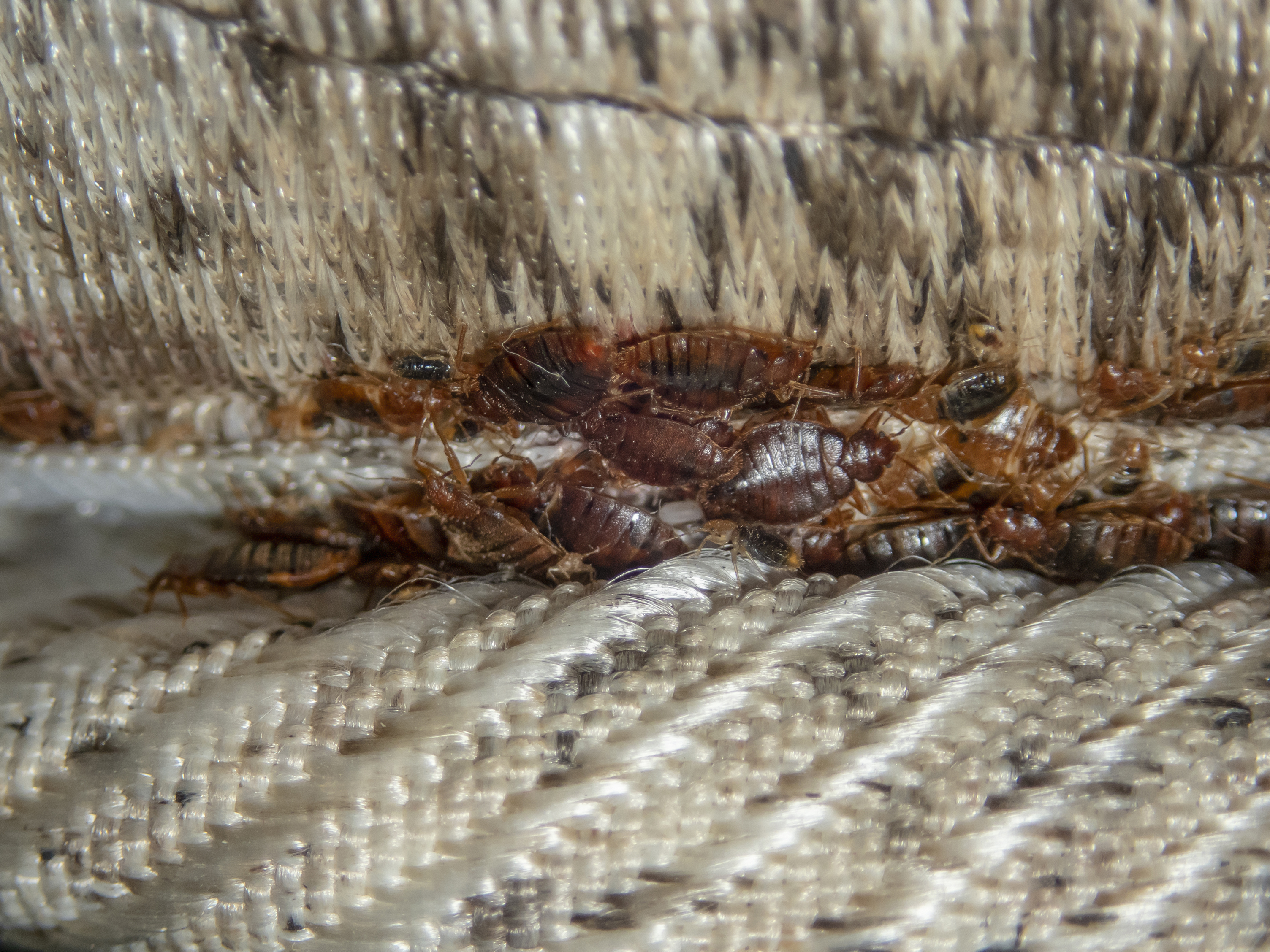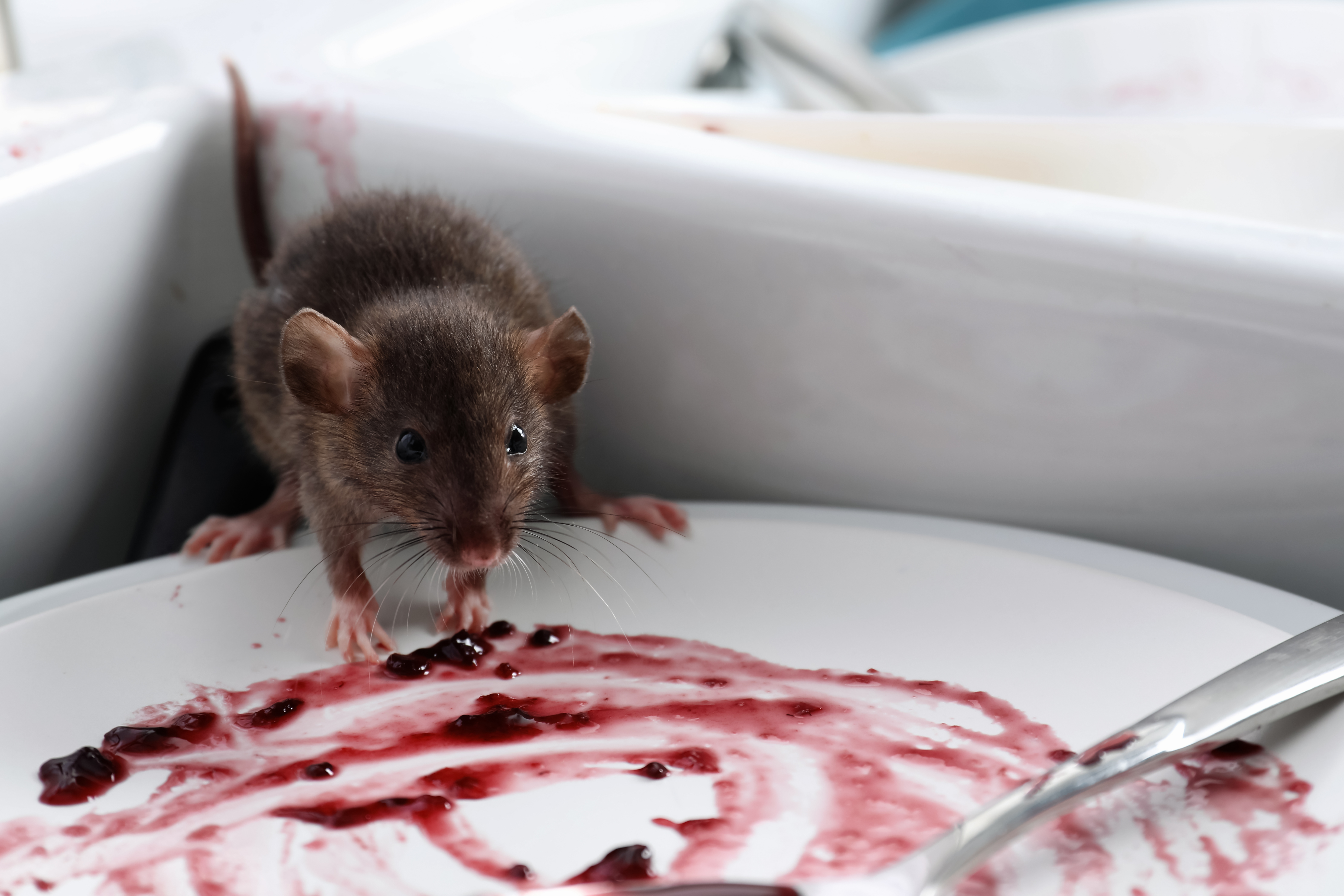Last night you went to sleep, all snuggled up like a bug in a rug. The next morning you wake covered in little welts all over your back, arms, and legs. Now, you know you closed the window so it couldn’t have been any pesky mosquitoes nibbling on you. There’s no sign of any spiders or other biting insects lurking about either. What could it be? Well… It looks like you possibly have Bed Bugs.
Where Bed Bugs Hang Out
Bed Bugs don’t always hang out in bed either. They’ve been known to live in car seats, sofas and upholstery, occasionally carpets and even possibly office chairs. Anywhere that you lay or sit for extended periods of time is a prime location for a Bed Bug. They’re primarily nocturnal and typically come out at night to feast, which makes beds such an ideal environment for them to live in. But if they are hungry, day or night, these parasites can, and will, make a feast out of whatever happens to be lying about.
Bed Bug bites are not poisonous and pose no serious harm. Once bitten, you will probably see bite marks or maybe a small rash. It can take up to fourteen days before you even notice you have been bitten. You may want to seek medical attention if you have multiple bite marks. In any case, when your skin is damaged, you are at risk for contracting other skin infections.
Signs
How can you tell if you have Bed Bugs? Other than the outward signs of bite marks, you can also tell by looking around an area you may believe is infested. Bed Bugs shed their exoskeleton, and you can often find debris of this. Examine the folds of your mattress, under buttons or other adornments and along the sides, especially corners and piping, for signs of anything moving. Bed Bugs are quite small so you may want to use a magnifying glass for a closer look.
Bed Bugs are much like fleas, feeding off of their victim’s blood. They’re also a bit messy. Look around the room, your bed or furniture for any small “rusty” blood stains that the Bed Bug has possibly left behind. Also, keep in mind that often times the room they live in will have a sweet musty odor.
What’s Next?
Oh great, you have Bed Bugs. Now what? Bed Bugs may be able to survive months (between 100-300 days) without eating. However, they are quite susceptible to heat and cold. Scientists have found that by exposing Bed Bugs to temperatures above 113 degrees will kill them. By using a hair dryer over the infested area for an hour could illuminate a large portion, if not all, of the Bed Bugs. They also can’t survive freezing temperatures either, but it’s a bit difficult to shove your furniture into a freezer.
If you do happen to have infected pieces of furniture don’t move them. By moving them, you run the risk of contaminating other furniture in your home. Also, avoid storing items such as sweaters or thick fabrics under the bed. This gives Bed Bugs a perfect place to cuddle up until the time comes to jump out and bite you.
If you do have bed bugs, don’t use pesticides to get rid of them. Using pesticides on places you have frequent contact with can cause more harm than any Bed Bug’s bite. In cases of Bed Bug infestations, it’s best to call in a professional to eliminate the problem. The professionals at AIPM are trained to exterminate not only Bed Bugs but all types of insect infestations. AIPM’s trained team can remove any threats to your property while setting up a custom plan to ensure that you never have to face an infestation by any insect or pest again. Receive a free consultation today! Click here






.webp)



Submit a Comment